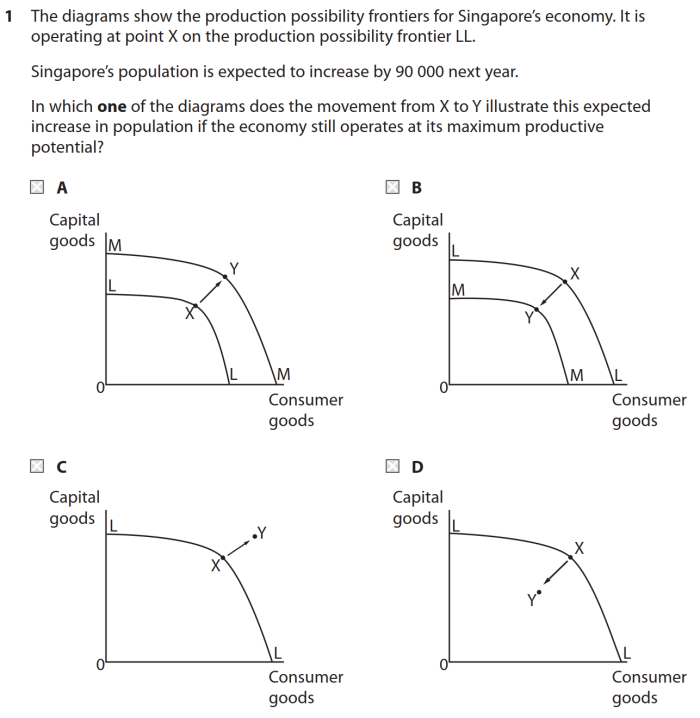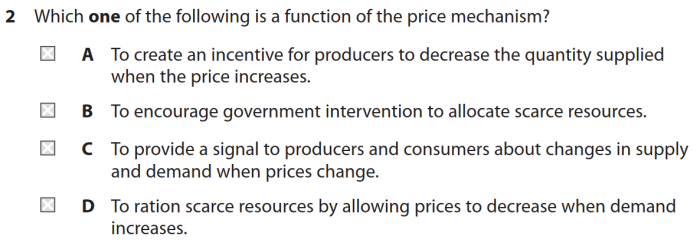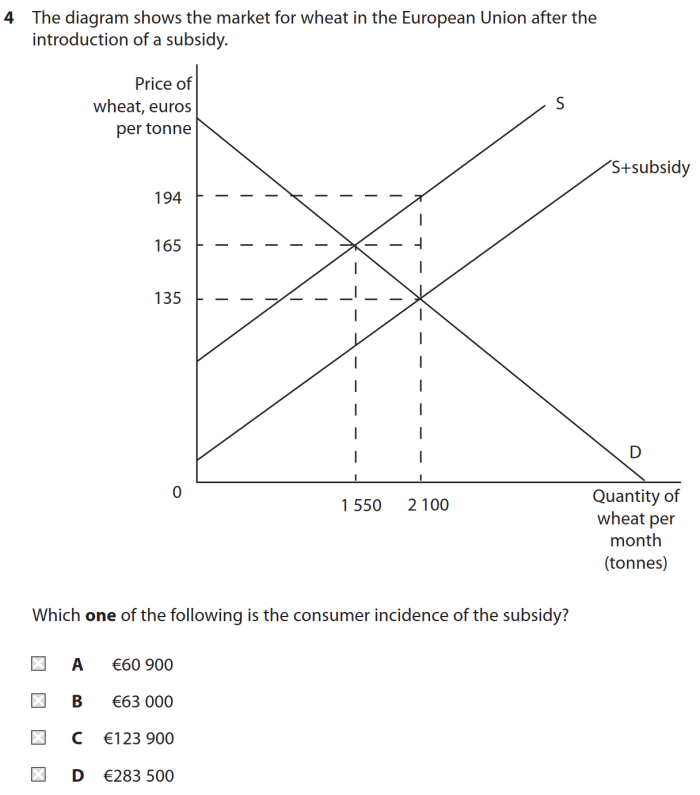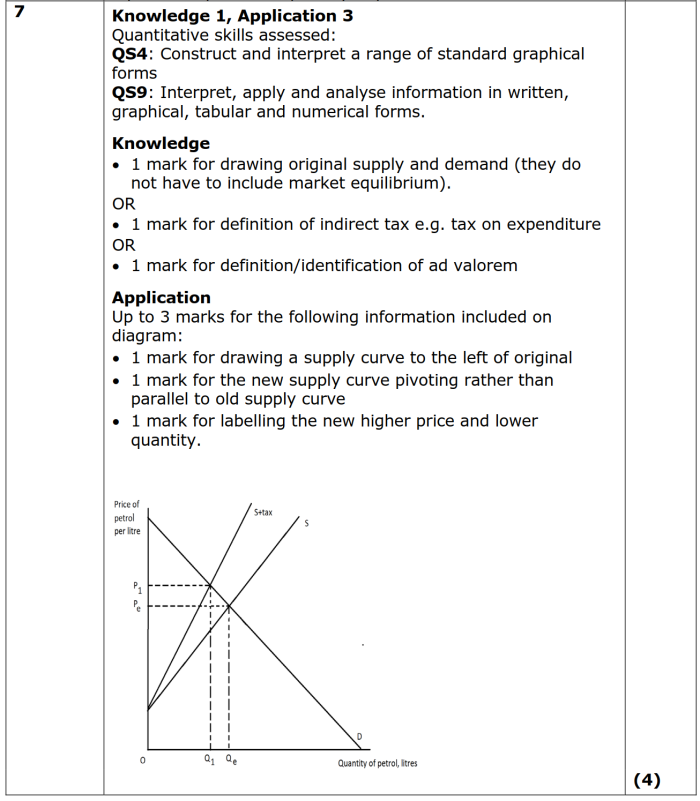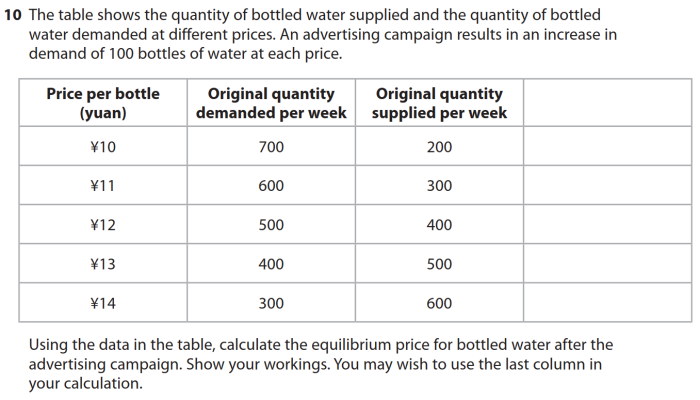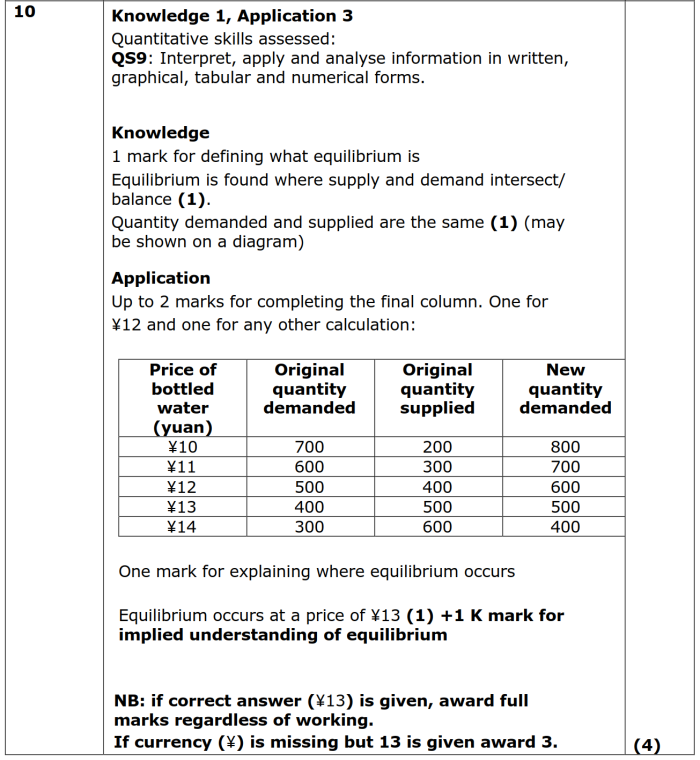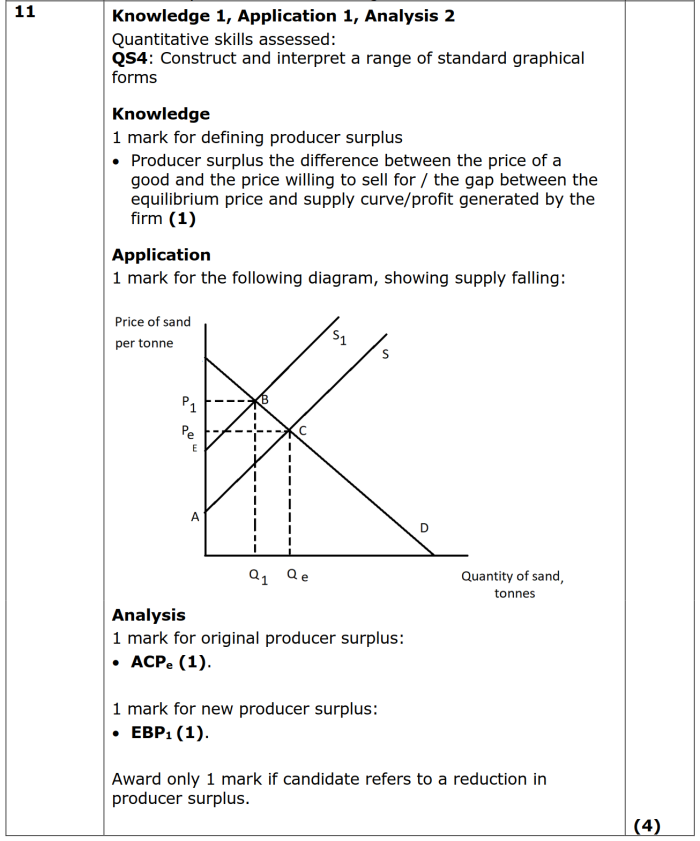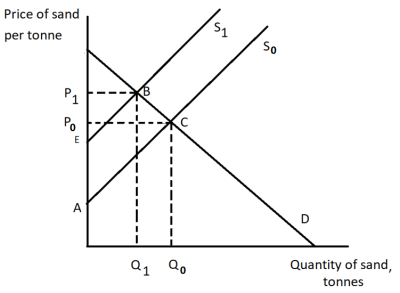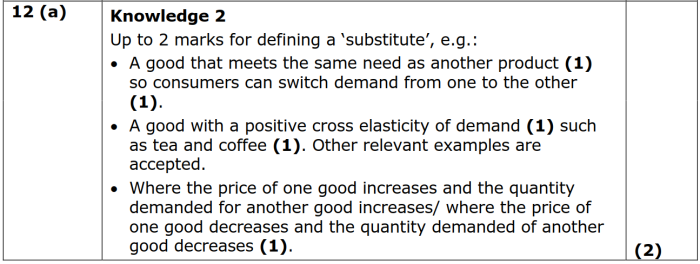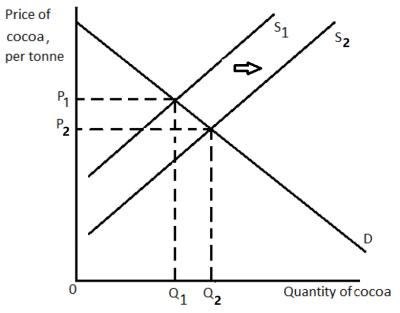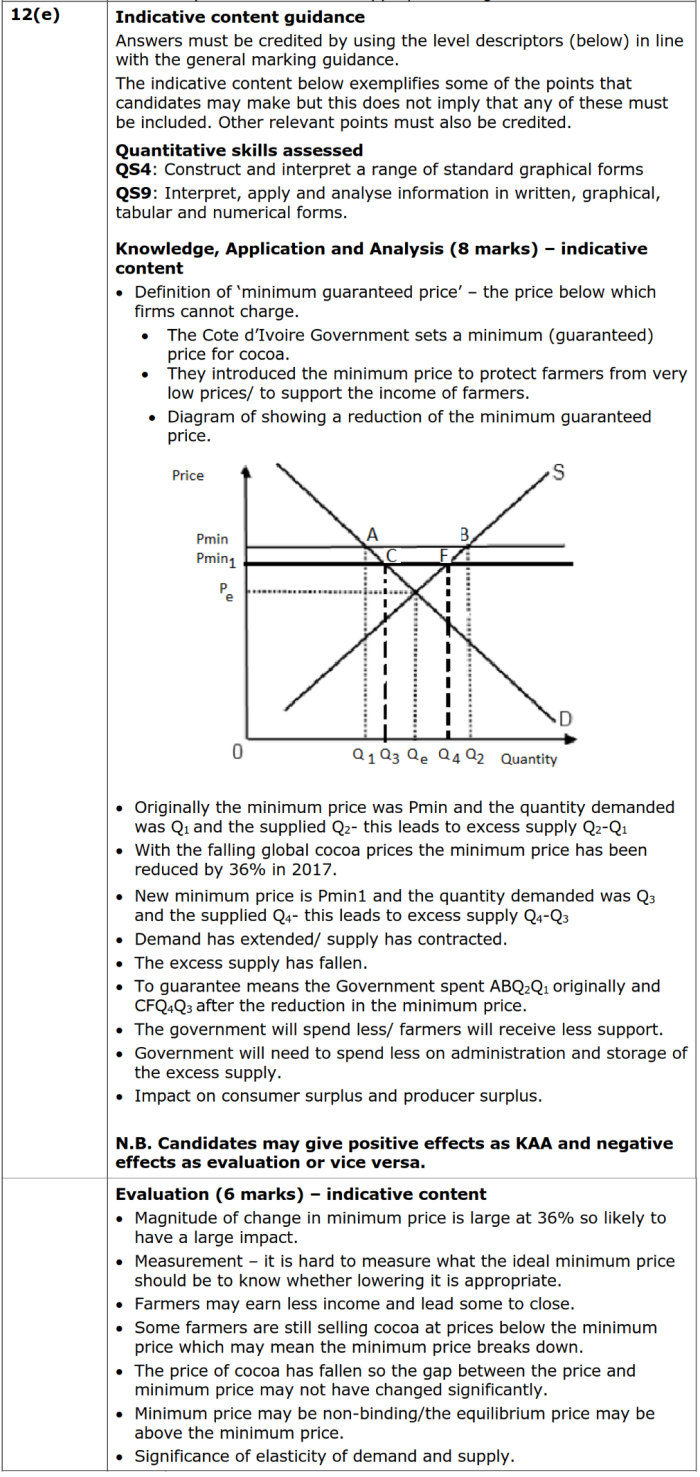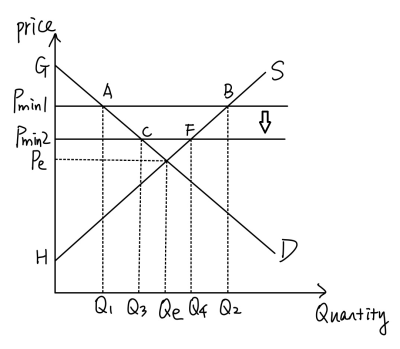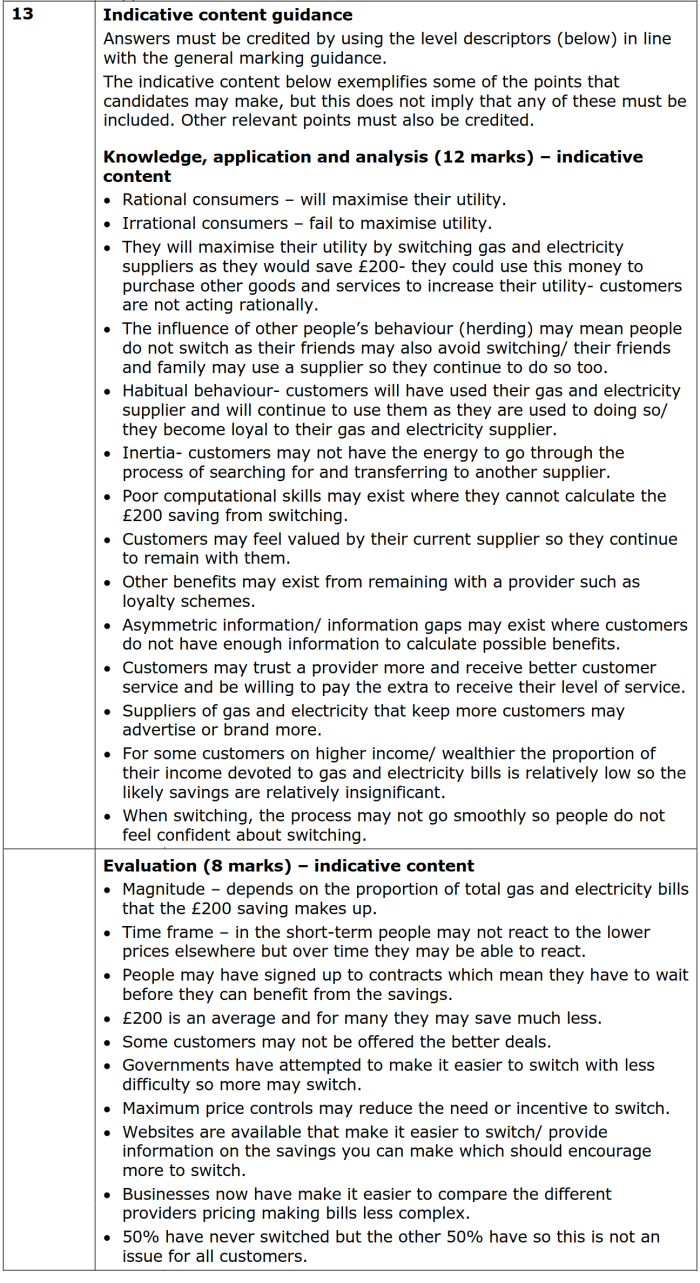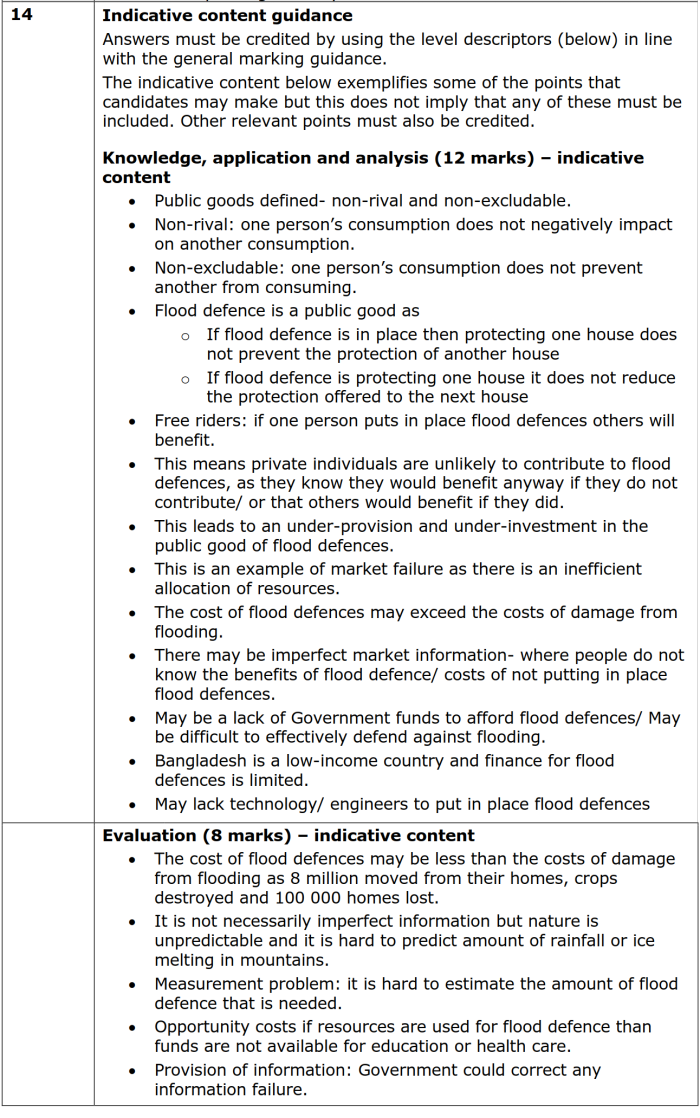“WEC11 01 que 20190109”的版本间的差异
(→14) |
(→12(b)) |
||
| (未显示同一用户的2个中间版本) | |||
| 第196行: | 第196行: | ||
| align="right" valign="top" |'''参考例文'''|| || style="background: #F0FFF0"| <blockquote><span style="font-size:20px"><span style="font-family:Times New Roman,楷体"> | | align="right" valign="top" |'''参考例文'''|| || style="background: #F0FFF0"| <blockquote><span style="font-size:20px"><span style="font-family:Times New Roman,楷体"> | ||
{{color|red|'''(材料运用→)'''}}(填表格,每个价格处的new quantity demanded等于original quantity demanded加上100) | {{color|red|'''(材料运用→)'''}}(填表格,每个价格处的new quantity demanded等于original quantity demanded加上100) | ||
{{color|red|'''(概念→)'''}}Market equilibrium occurs where quantity demanded and supplied are the same. {{color|red|'''(分析与计算→)'''}}According to the table, when the price is ¥13, new quantity demanded and supplied are both 500. Therefore, the equilibrium price is ¥13. | {{color|red|'''(概念→)'''}}Market equilibrium occurs where quantity demanded and quantity supplied are the same. {{color|red|'''(分析与计算→)'''}}According to the table, when the price is ¥13, new quantity demanded and quantity supplied are both 500. Therefore, the equilibrium price is ¥13. | ||
</span></span></blockquote> | </span></span></blockquote> | ||
|- | |- | ||
| 第239行: | 第239行: | ||
Cocoa bean prices were high during 2015 and much of 2016 reflecting increased demand and decreased supply. For example, in 2016, consumption of cocoa exceeded production by 197 000 tonnes.<br/><br/> | Cocoa bean prices were high during 2015 and much of 2016 reflecting increased demand and decreased supply. For example, in 2016, consumption of cocoa exceeded production by 197 000 tonnes.<br/><br/> | ||
However, in 2017, production in the Côte d’Ivoire rose from 1.45 million tonnes to 1.93 million tonnes. The Côte d’Ivoire’s output increased after many new cocoa trees matured. Good cocoa harvests during 2017 led to stocks being 27.3% higher than in 2016. In April 2017, cocoa bean prices fell below $2 000 per tonne.<br/><br/> | However, in 2017, production in the Côte d’Ivoire rose from 1.45 million tonnes to 1.93 million tonnes. The Côte d’Ivoire’s output increased after many new cocoa trees matured. Good cocoa harvests during 2017 led to stocks being 27.3% higher than in 2016. In April 2017, cocoa bean prices fell below $2 000 per tonne.<br/><br/> | ||
Cocoa trees take four to five years to mature and produce cocoa pods. Cocoa trees grow best in regions near the equator. This means very few countries can successfully grow the crop.<br/><br/> | Cocoa trees take four to five years to mature and produce cocoa pods. Cocoa trees grow best in regions near the equator. This means very few countries can successfully grow the crop.<br/><br/> | ||
In contrast, the prices of substitutes for cocoa such as tea and coffee increased during 2017.<br/><br/> | In contrast, the prices of substitutes for cocoa such as tea and coffee increased during 2017.<br/><br/> | ||
| 第309行: | 第308行: | ||
{{color|red|'''(概念→)'''}}Price elasticity of supply means the responsiveness of quantity supplied to a change in the price. Inelastic supply is where a change in price will see a smaller percentage change in quantity supplied.<br/> | {{color|red|'''(概念→)'''}}Price elasticity of supply means the responsiveness of quantity supplied to a change in the price. Inelastic supply is where a change in price will see a smaller percentage change in quantity supplied.<br/> | ||
<br/> | <br/> | ||
{{color|red|'''(指出影响因素→)'''}}Time is one factor to influence PES. {{color|red|'''(引用指定文段内容→)'''}}According to Extract A, cocoa trees take four to five years to mature and produce cocoa pods. {{color|red|'''(紧扣概念进行说明分析→)'''}}When price of cocoa increases, the | {{color|red|'''(指出影响因素→)'''}}Time is one factor to influence PES. {{color|red|'''(引用指定文段内容→)'''}}According to Extract A, cocoa trees take four to five years to mature and produce cocoa pods. {{color|red|'''(紧扣概念进行说明分析→)'''}}When price of cocoa increases, the quantity supplied of cocoa is difficult to increase as quickly as the price because cocoa needs time to mature. Therefore, PES of cocoa would be inelastic. | ||
</span></span></blockquote> | </span></span></blockquote> | ||
|- | |- | ||
| 第315行: | 第314行: | ||
|} | |} | ||
<br/> | <br/> | ||
====12(c)==== | ====12(c)==== | ||
{| | {| | ||
2023年2月12日 (日) 12:02的最新版本
单题搜索方法:右上角搜索中输入该题中的部分文字,点击搜索后进入相关页面,然后使用ctrl+F5(或其他按键组合调出搜索框),再次搜索该题干文字,直接定位到题目。
整卷下载
- 试卷请点击此处 ⇒ 【2019 冬季 U1】
- 答案请点击此处 ⇒ 【2019 冬季 U1 mark scheme】
题目解答
1
2
3
4
5
| 题目 | 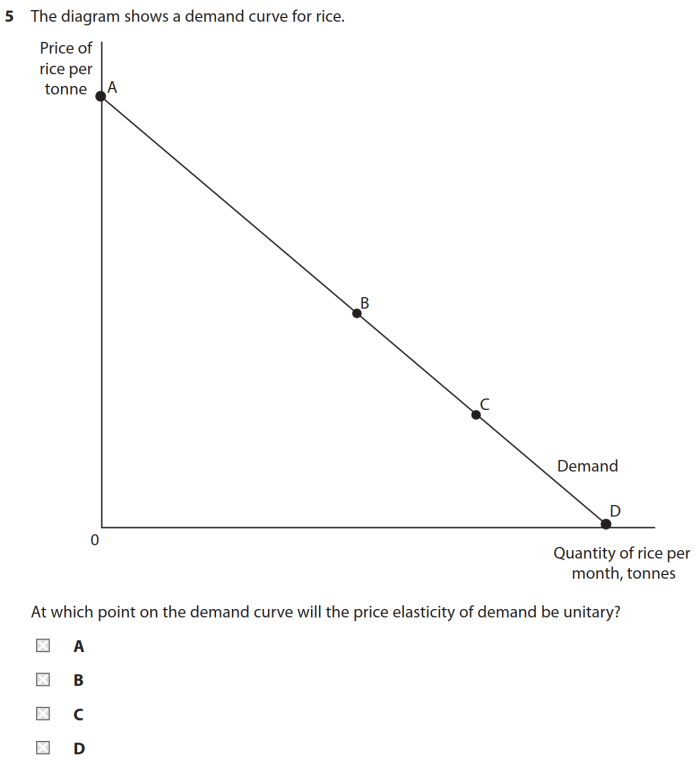
| |
| 答案 | B | |
| 难度 | 容易 | |
| 考察知识点 | Demand线上各点的PED值 | |
| 解答要点 | ● 单位弹性位于D线的中点位置,因此B选项正确。 | |
| 文字版备查 | The diagram shows a demand curve for rice. At which point on the demand curve will the price elasticity of demand be unitary? |
6
7
8
9
10
11
12
文章材料-中英对照
| 原文 | 参考译文(谷歌机翻) |
|---|---|
| The market for cocoa Extract A - The price of cocoa falls |
可可市场 摘录A - 可可价格下跌 |
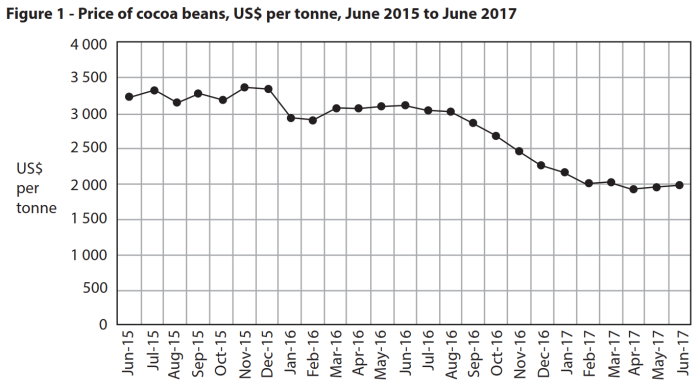
12(a)
12(b)
12(c)
12(d)
12(e)
13
14
